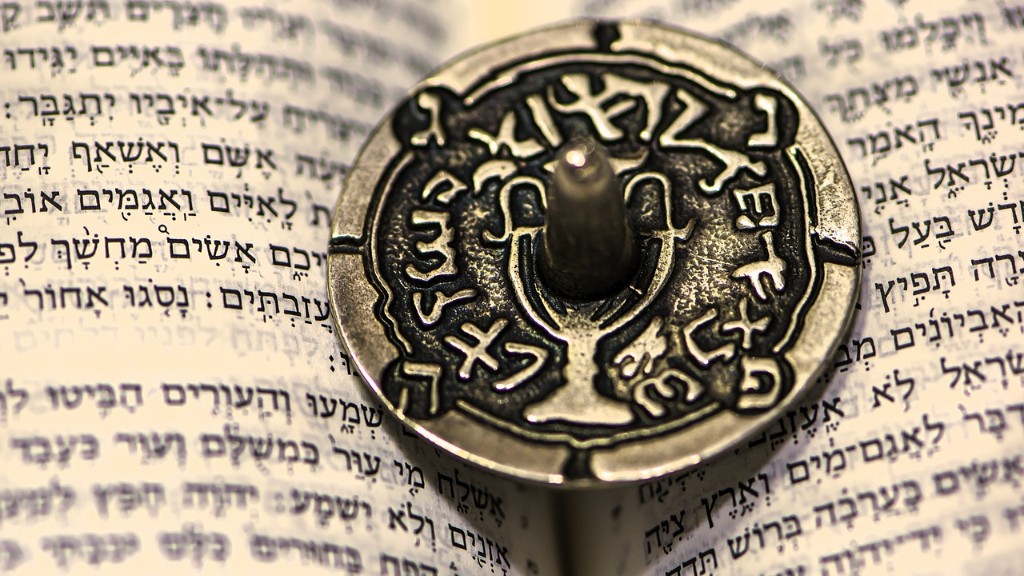The star of David is an international symbol of Judaism and a potent emblem of Jewish solidarity. It’s also a six-pointed star with two equilateral triangles that come together to form a hexagon. It has strong connections to the traditions and religion of Judaism and is a reflection of the essential components of the faith.
The origins and use of the star of David, however, can be traced back to ancient times but its modern use in the Jewish community began in the Middle Ages. The importance of the star of David has been a part of Jewish tradition for centuries. Most commonly known as the Shield of David, Mogen David, Magen Dawid, or Solomon’s Seal, the symbol is widely used in many religions and cultures throughout the world.
The star of David has been seen as a symbol of Judaism and Jewish identity since the 16th century. It has become a symbol to those who identify with the Jewish faith, as well as a source of pride and a reminder of their shared history. The star of David appears on numerous flags, coins, stamps, as well as restaurant plates and even on military headgear.
In Judaism, the star of David is believed to represent the shield of King David, the first Jewish king, which symbolizes the connection between Judaism and Jewishness. It also has a spiritual significance. In Kabbalistic teachings, the star of David is said to be a sign of human power, with each triangle representing a divine light, in the form of the love of God and union of the feminine and masculine aspects of God.
The star of David has also been used to teach important principles and ideas. For example, the Rosicrucians, a philosophical order, used the star of David as a way to discuss the concept of consciousness, morality and free will. During World War II, the star was used as a symbol of the Jewish identity.
The star of David has a deep and important meaning that is unique to each person. It is more than a mere symbol, it is a connection to the history, culture and faith of the Jewish faith. It is a symbol that transcends time and brings people of different backgrounds and faiths together in a shared history and shared values.
Modern Relevance
Today, the star of David still has a powerful significance, particularly within Israel. It is featured on Israel’s national flag, as well as on numerous public buildings, monuments, and coins. It has also been adopted by many different clubs, organizations and even sports teams, as a symbol of Jewish pride and unity.
The star of David is also used as a popular and often universal symbol to identify Jewishness. It is a widely recognized and often iconic representation, seen in numerous countries and cultures, all over the world. The star of David is a symbol which unifies the Jewish people e.g. it is found featured prominently in synagogues, on kippot, as well as worn proudly by individuals as a sign of their connection to Judaism.
Moreover, it is also a powerful tool for personal reflection, spirituality, hope and unity. By wearing it, one may induce a sense of responsibility and pride in their identity and the Jewish faith. It is a symbol of strength, courage and solidarity and has come to signify Jewish pride, courage and resilience.
Symbolic Meaning
The symbolism associated with the star of David is often associated with perfection, strength, and unity. The triangle form depicts the unity of opposites, the masculine and feminine, Divine and material, fire and water, strength and gentleness. It is a reminder of our interconnectedness to one another and the importance of unity in the face of adversity.
Furthermore, the star also serves as a reminder of the importance of faith and spirituality in life. It is a powerful symbol that reminds us of the spiritual unity of all humanity and the divine connection that resides within each of us. Additionally, the star of David is believed to possess curative powers and many people wear it as a protective talisman.
The star of David has been a symbolic representation and a reminder of the importance of faith and unity for many centuries now. It has been a source of pride, inspiration, and courage for those who identify with Jewishness. The symbol holds special meaning and importance, as it resonates deeply with the core values and traditions of the Jewish faith.
Effect on Other Religions
The star of David has long been a symbol of pride and unity for the Jewish community and has also had a positive effect on other religions. Many Christian groups have adopted the star of David in their worship, special events and even holiday services, as it reflects their own view of the unity of God and Jesus Christ. It has been incorporated into many other religions and cultures, and it also appears in some symbols of peace.
The star of David has appeared in Christian churches, mosques, and Buddhist temples throughout the world. In addition, it has become a symbol of interfaith understanding and peace. This is exemplified in its use in interfaith dialogues and gatherings, which often feature the star of David alongside symbols of other religion.
The star of David has also been adopted by multiple organizations, as a symbol of awareness and inclusion. Many businesses and schools feature the star of David in their logos, as a sign of their commitment to diversity, equality and inclusion. It is also often used for educational purposes, to promote a better understanding and greater respect for different cultures and traditions.
Research and Conclusion
Research into the symbolism associated with the star of David has revealed a multi-layered and complex meaning. It is a powerful symbol of solidarity and Jewish pride, as well as a reminder of the spiritual unity of all humanity. The star of David has transcended time, religion, and culture and is a source of inspiration to many. Furthermore, its use can be seen in multiple religions and cultures, as a sign of respect and understanding.
The star of David has evolved throughout history and has come to stand for much more than just a symbol of Judaism. It is a reminder of our interconnectedness to one another and the importance of faith, unity, peace, and understanding. It is a symbol of resilience, courage and strength, and a reminder that we all have the power to make a difference.

